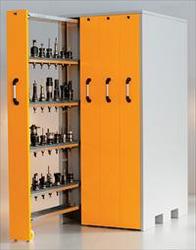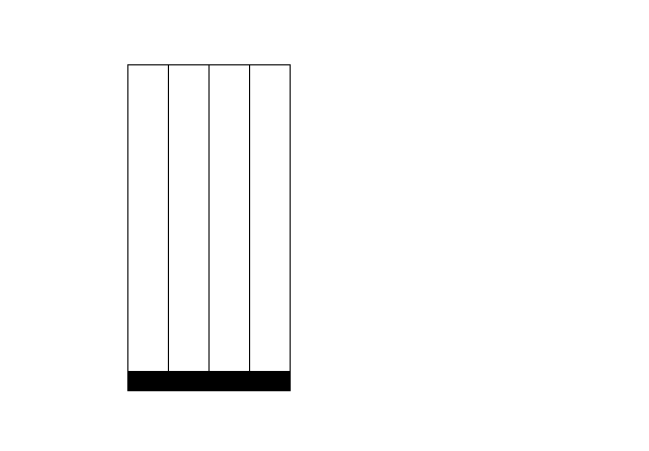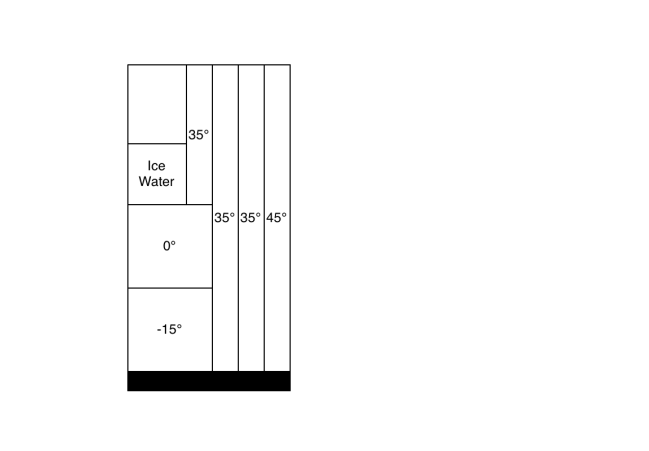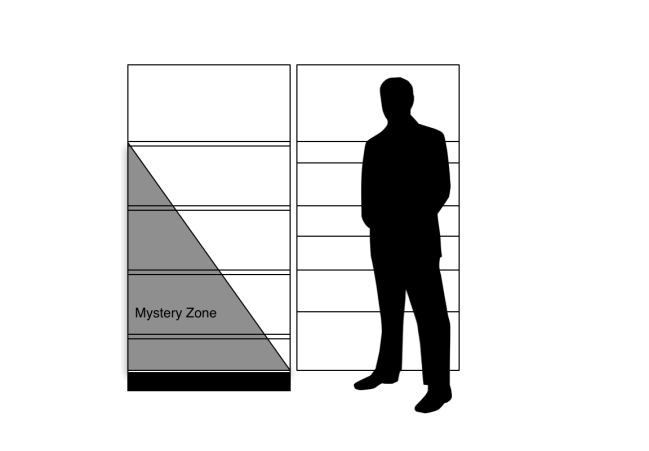Some day, if somebody invents a time machine, my first stop may be the time/place when the refrigerator was invented. Or maybe I’d have to go all the way back to when the ice box was invented. I would work up my most sarcastic tone and say, “Really? A box with a big door on the front. You work all day on that or did you knock off around noon?”
OK, technically this isn’t UX, really, it’s more industrial design, but once I find a problem, it bugs me until I can write up or create a good solution. Ask Alex, I’ve been bugging her about this for a year.
The problem I have with refrigerators is you can’t see what’s in them. Even with the widest door, the shelves and the items themselves block the view of what’s in the fridge.
Every fridge in the world has some pickles or obscure sauce in “the mystery zone.”
Sure, you can find things in the mystery zone by bending down and moving things around, but you only do that when you are looking for something specific; the mystery zone is not for browsing.
The MIT Media Lab came up with the laughable solution of putting cameras in the refrigerator and then projecting images on the big door. (http://web.media.mit.edu/~jackylee/publication/UIST_kitchen.pdf) This doesn’t solve the problem very well; the projected image disappears when you are actually looking for something in front of the refrigerator. Plus the overhead cam only works for one shelf. You’d end up needing multiple images for multiple shelves. At that point you’re adding ‘refrigerator channels’ and a remote control… Systems on top of systems to solve a basic design problem that has a better solution.
Get rid of the door.
I’m not saying leave the refrigerator open. That would not be a refrigerator. I’m saying replace the door with a series of vertical pull out drawers.

A closet made of vertical drawers.

The problem is solved by removing the door and replacing it and the interior shelves with vertical pull-out shelves.
The vertical drawers immediately solve the problem that refrigerators have: difficult to see/reach depth. If the items in the refrigerator are put into vertical drawers, there is – because of the discipline of the vertical drawers – no chance to hide items behind others. Each item has the same ‘reachability’ as all others since everything is on the same series of flat planes.
There are other advantages to this sort of layout.
Temperature Zones
If the space between the drawers is insulated, each drawer can act as its own micro-fridge. Each zone can have a setting for temperature, and/or, cost permitting, each can have a thermostat. That allows exact temperature control in each zone.
This let’s the user have a special zone for wine or beer or other items, which call for different temperature.
Higher Efficiency
One thing that limits the depth of insulation on refrigerators is the door. Ten inches of insulation on the inside of the door would make it much more efficient, but it would also make the door impossible to open because the insulation would contact the box that makes up the fridge. The only way to make deep insulation is by ‘cheating’ it and carving the insulation so it doesn’t contact the box when the door is opened.
Since the vertical drawers pull out rather than swing out, the depth of the insulation is only limited by the law of diminishing returns. A 35 degree section could have 3 or 4 inches of insulation, whereas a deep freeze section could have 8″ of insulation to increase the efficiency of that section.
Scannable Contents
This is the big one for the geeks. All over the country people are trying to figure out how to make a “smart refrigerator” – a fridge that will keep inventory of things it holds and sends that inventory either to the owner or directly to the grocery store. The problem they are running into is the fact that to keep inventory, the user has to scan every item prior to putting it into the “mystery zone.”
But with the vertical drawer fridge, the items are flattened and prepped for scanning by the simple use of the refrigerator. It should be a simple matter of adding either a camera or a scanner on the side of the refrigerator that is triggered (and maybe powered) by pulling out a drawer. If the shelves are made transparent, each item’s bar code could be scanned, cataloged, dated and sent to the user’s phone or, if photographic, the user can get photos of the items in their fridge.
Customizable
This is the ‘super Cadillac’ version, but since I’m just imagining, cost is no object.
If the refrigerator drawers were made as a standard grid of heights and widths, each self contained and ‘hot swappable‘ the end user could have the refrigerator of their dreams. You want a deep freeze drawer? Buy one and slide it in. You want a ‘wall of beer’? Buy a tall drawer and set the temp for the kind of beer you like. Or buy two half drawers and set the temp per beer in that section.
I have a tiny kitchen in Manhattan and a corresponding tiny fridge. Normally I don’t need a big drawer, but around Thanksgiving, suddenly I need space for a big turkey. If I had a hot swappable fridge, I could easily buy a big item drawer, slide it in around November, and accommodate the big turkey.
Below is my ideal. A beer wall on the right, two tall drawers for food, a deep freeze and a regular freezer. Finally, an ice water dispenser, which is a wonderful luxury.

My ideal fridge. It has multiple temperature zones that each have their own vertical pull out drawer.
